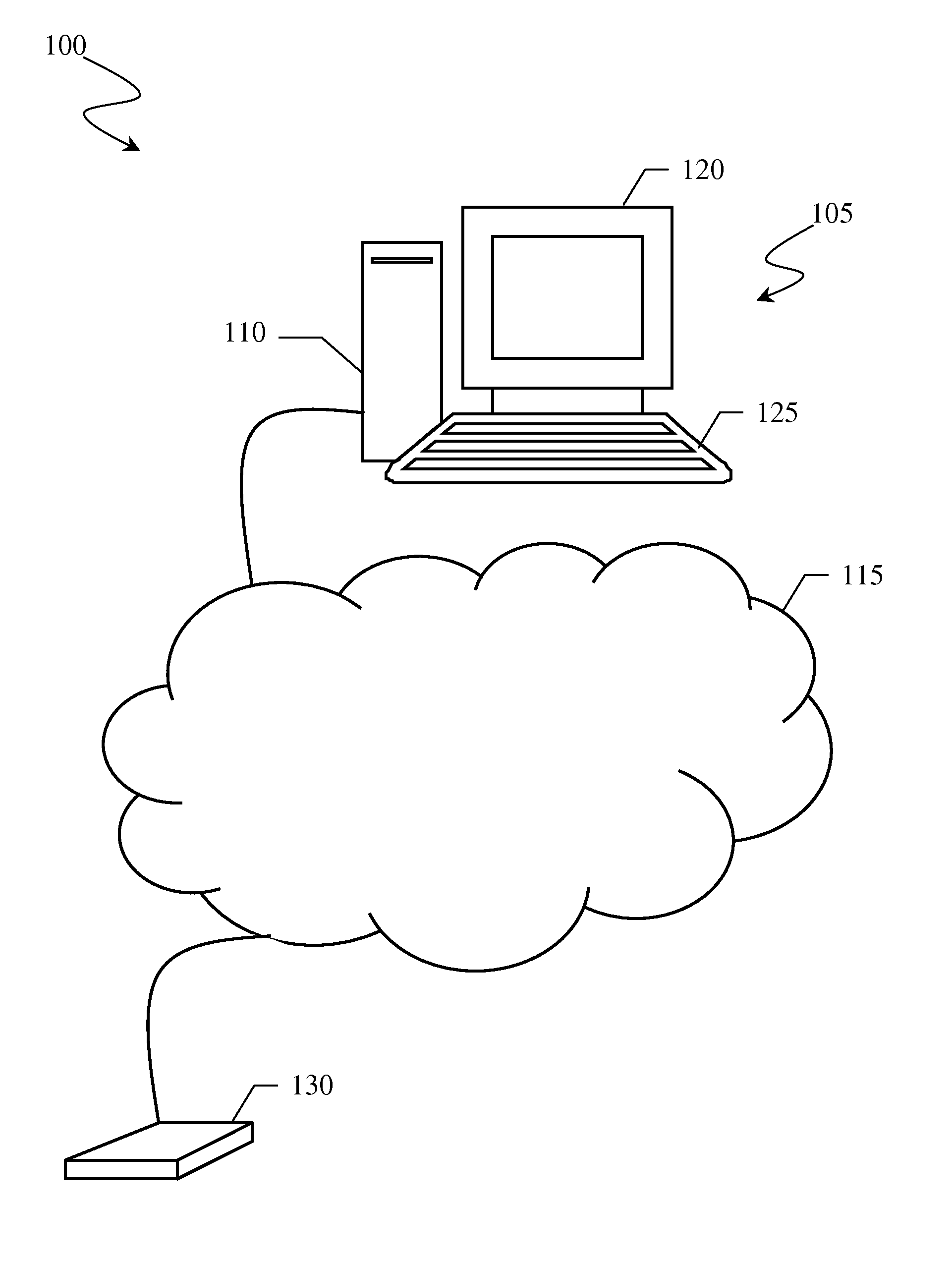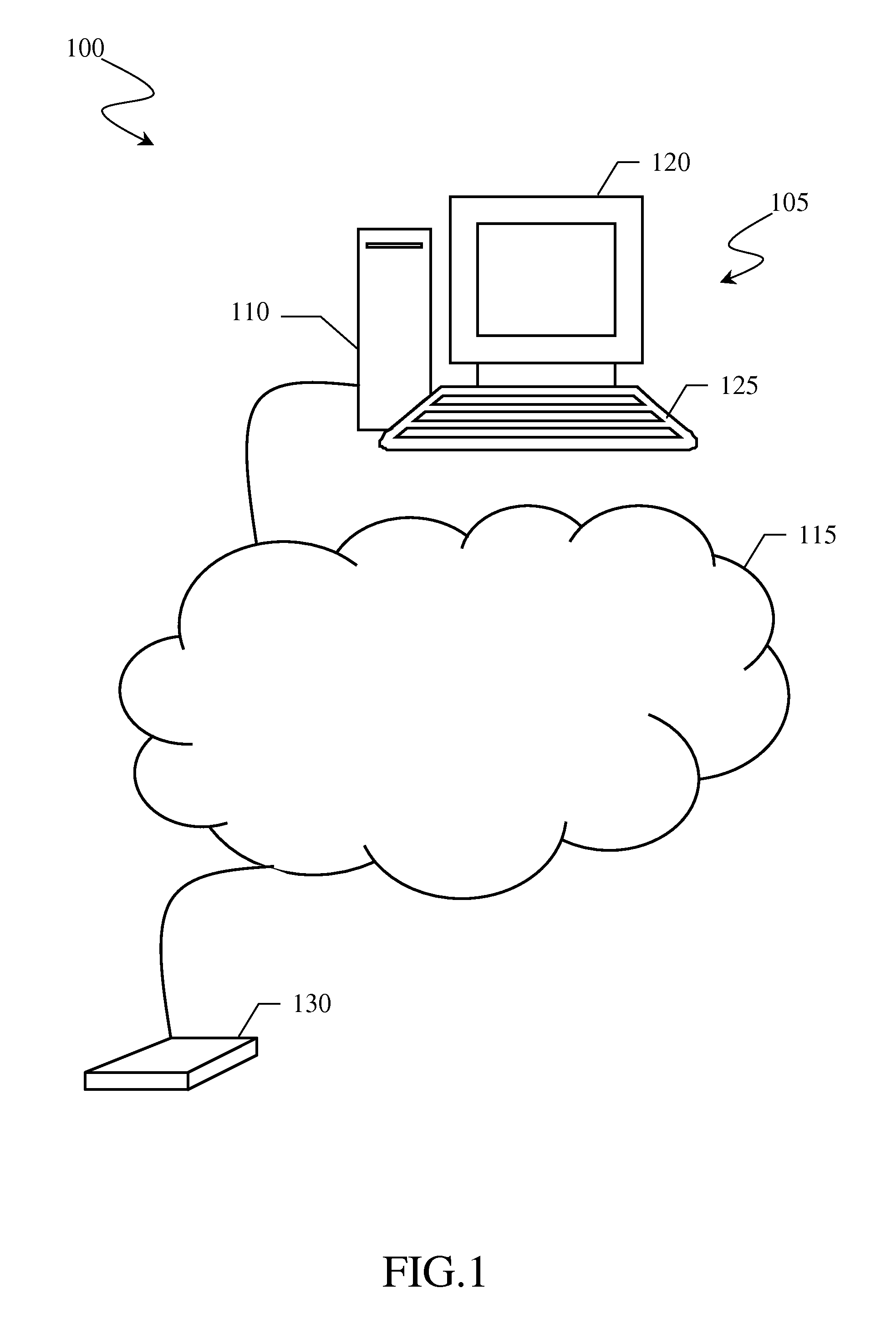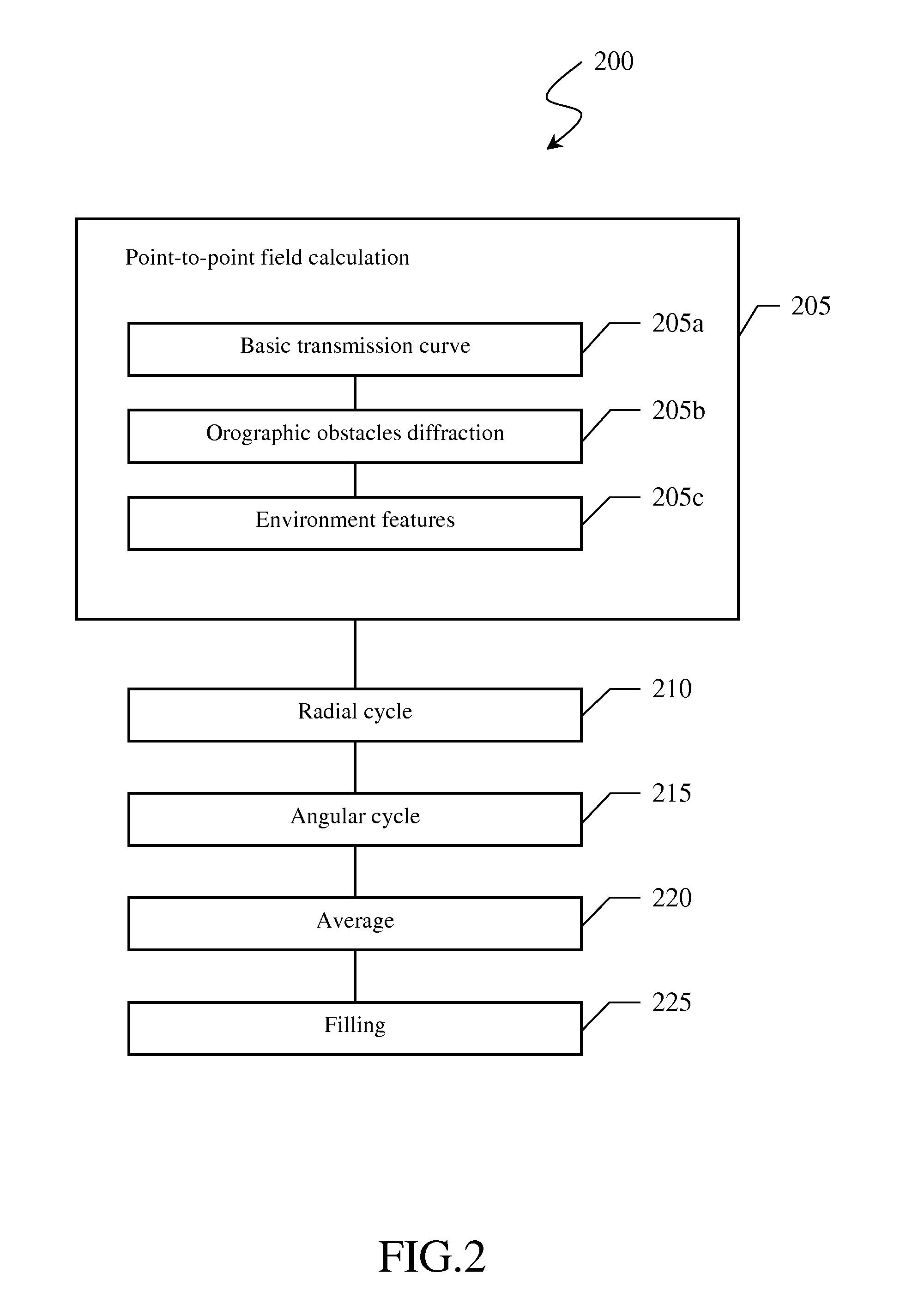Method for the prediction of coverage areas of a cellular network
a cellular network and coverage area technology, applied in the field of radiocommunications network planning, can solve the problems of difficult solution, inability to distinguish propagation channels, drawbacks of the rasputin algorithm, etc., and achieve the effect of maximizing the exploitation of radio resources, avoiding the occurrence of rasputin errors, and predicting precise coverage areas
- Summary
- Abstract
- Description
- Claims
- Application Information
AI Technical Summary
Benefits of technology
Problems solved by technology
Method used
Image
Examples
Embodiment Construction
[0045]With reference to the drawings, and particularly to FIG. 1, the latter shows a processing system for planning a radiocommunications network for mobile terminals. The processing system, designated as a whole by 100, essentially comprises a work station 105, for example a Hewlett Packard J5000 with a 450 MHz CPU, 1 Gbyte RAM, 18 Gbyte hard disk and UNIX operating system, having a central processing unit 110 connected to a local area network 115, an internal hard disk (not shown) storing reference databases, a display 120 and a keyboard 125. Should the databases exceed the hard disk storage capacity, the work station 105 may also be provided with an external hard disk 130 connected to central processing unit 110 directly or (as exemplary depicted in the figure) through the local area network 115.
[0046]The work station 105 is configured to allow radiocommunications network planning on the basis of computer program modules which run on the central processing unit 110 and implementi...
PUM
 Login to View More
Login to View More Abstract
Description
Claims
Application Information
 Login to View More
Login to View More - R&D
- Intellectual Property
- Life Sciences
- Materials
- Tech Scout
- Unparalleled Data Quality
- Higher Quality Content
- 60% Fewer Hallucinations
Browse by: Latest US Patents, China's latest patents, Technical Efficacy Thesaurus, Application Domain, Technology Topic, Popular Technical Reports.
© 2025 PatSnap. All rights reserved.Legal|Privacy policy|Modern Slavery Act Transparency Statement|Sitemap|About US| Contact US: help@patsnap.com



